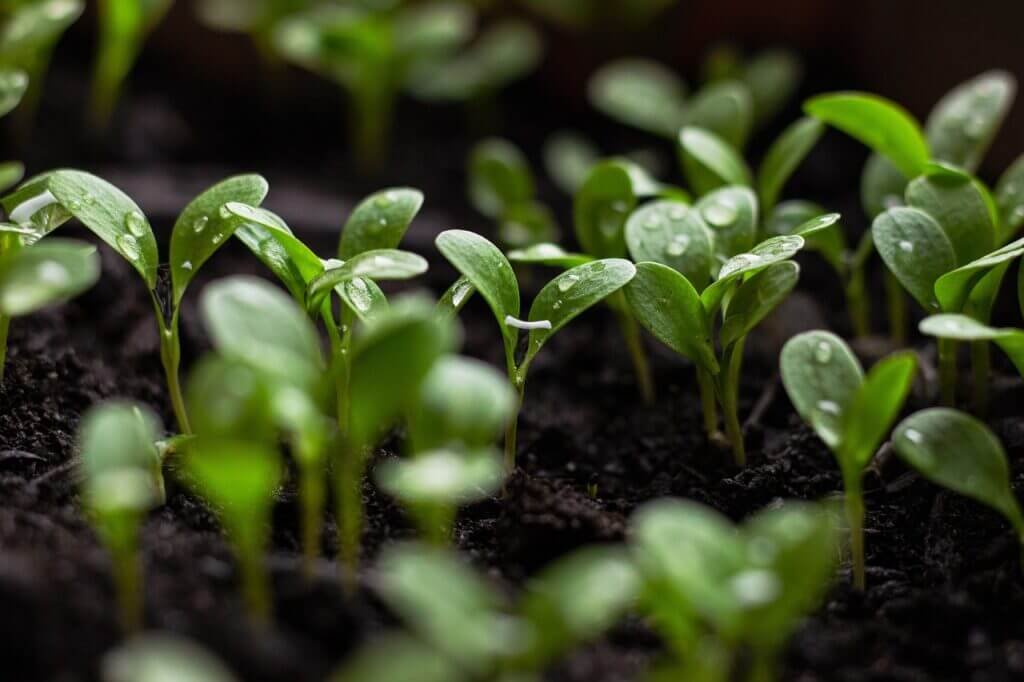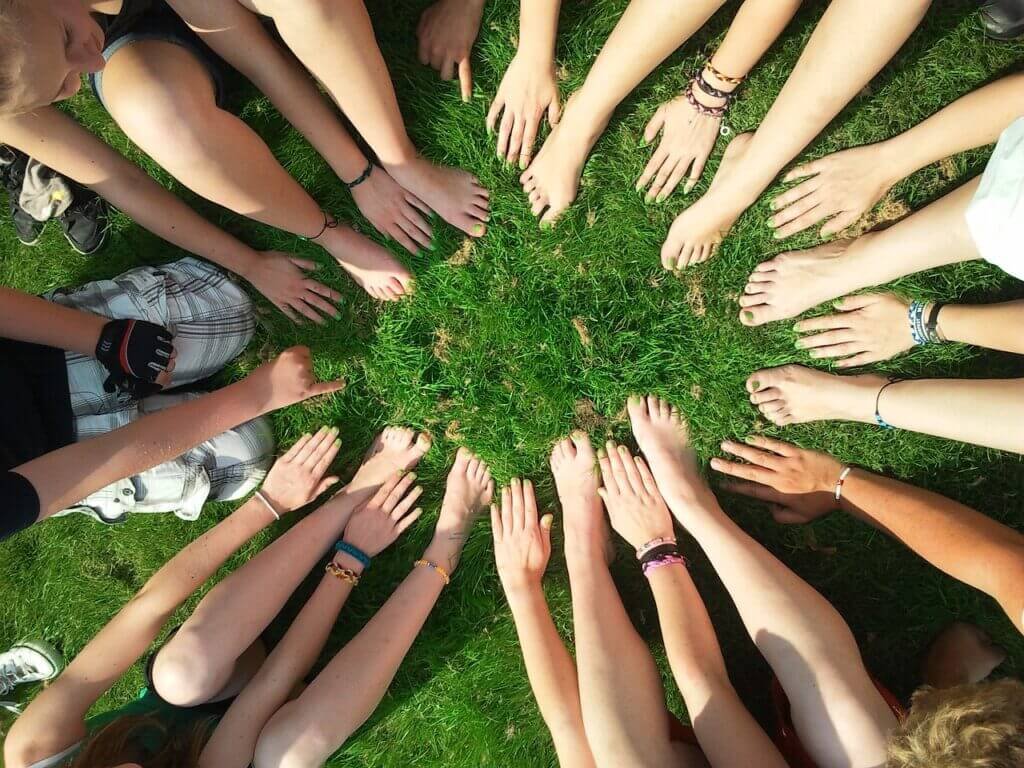Have you ever walked through a city and wished there were more green spaces and vibrant plant life? If so, then guerrilla gardening might be just the thing for you! Guerrilla gardening is a grassroots movement that involves reclaiming neglected or abandoned urban areas and transforming them into lush gardens. It’s a way to bring beauty and nature to the concrete jungle, and anyone can participate. In this article, we’ll explore what guerrilla gardening is all about and share some tips on how you can join in on this inspiring movement in your own city. So grab your gardening gloves and get ready to bring a touch of green to your urban surroundings!

What is Guerrilla Gardening
Guerrilla gardening is a grassroots movement that involves the cultivation of neglected or underutilized urban spaces without permission. It is a form of activism that aims to transform urban areas by creating gardens and green spaces where they are needed the most. Guerrilla gardeners often operate secretly and anonymously, with the intention of beautifying the city and promoting environmental sustainability.
Definition of Guerrilla Gardening
Guerrilla gardening can be defined as the act of gardening on public or private land without the owner’s consent. It involves reclaiming forgotten or abandoned spaces, such as vacant lots, roadside verges, or neglected areas, and transforming them into vibrant gardens filled with flowers, fruits, and vegetables. This unconventional form of gardening challenges traditional notions of land use and ownership, encouraging people to take an active role in improving their communities.
Origins of Guerrilla Gardening
The origins of guerrilla gardening can be traced back to the 1970s in New York City, during the “Green Guerillas” movement. Liz Christy, a pioneer of guerrilla gardening, transformed a vacant lot in Manhattan into a community garden, inspiring others to follow suit. The movement gained momentum in the 1990s in Europe, particularly in the United Kingdom, where activists like Richard Reynolds popularized the term “guerrilla gardening” through their actions and writings.
Goals of Guerrilla Gardening
The primary goal of guerrilla gardening is to reclaim and beautify urban spaces that have been neglected or left to decay. By creating green spaces, guerrilla gardeners enhance the visual appeal of their neighborhoods, making them more inviting and livable. Additionally, guerrilla gardening aims to improve the environment by increasing biodiversity, improving air and water quality, and mitigating the effects of urban heat islands. It also promotes community engagement and empowerment, fostering a sense of ownership and pride among residents.
Getting Started with Guerrilla Gardening
If you’re eager to join the guerrilla gardening movement and make a positive impact on your community, here are some steps you can follow to get started:
Research Local Laws and Regulations
Before embarking on any guerrilla gardening project, it’s essential to familiarize yourself with the local laws and regulations regarding land use and gardening. Some cities may have specific rules governing the cultivation of public or private land, while others may be more lenient. By understanding the legal framework, you can plan your gardening activities accordingly and avoid potential legal issues.
Identify Potential Sites for Guerrilla Gardening
Once you’re aware of the legal constraints, begin scouting for potential sites that could benefit from guerrilla gardening. Look for neglected areas, vacant lots, or roadside spaces that could be transformed into beautiful gardens. Pay attention to factors such as sunlight, soil quality, and accessibility. Consider collaborating with local residents or organizations to identify sites and gain support for your gardening endeavors.
Determine What Plants to Grow
When choosing plants for your guerrilla garden, consider the local climate and environmental conditions. Opt for hardy, low-maintenance plants that can thrive in urban settings. Native and indigenous species are often a good choice as they are adapted to the local ecosystem and require less water and care. Edible plants such as herbs, vegetables, and fruit trees can also make a positive impact by promoting food security and sustainable living.
Gather Necessary Tools and Materials
To embark on your guerrilla gardening journey, make sure to gather the necessary tools and materials. These may include gardening gloves, shovels, trowels, compost, seeds, and seedlings. Consider sourcing materials sustainably by reusing items or seeking donations from local gardening stores or community members. Having the right tools and materials on hand will ensure that you’re prepared to create and maintain your guerrilla gardens effectively.

Preparing for Guerrilla Gardening
Before initiating any guerrilla gardening project, it’s important to make preparations to maximize your chances of success while minimizing potential risks. Here are some key steps to take:
Formulating a Plan
To ensure a well-executed project, it’s crucial to formulate a detailed plan for your guerrilla gardening endeavor. Identify your goals, entry points to the site, and strategies for planting and maintenance. Consider the long-term sustainability of the garden and how it will be cared for in the future. Having a clear plan in place will help you stay organized and focused throughout the process.
Assembling a Team
Guerrilla gardening can be more impactful and enjoyable when done with a team. Reach out to friends, neighbors, or members of the local community who may be interested in participating. Collaborating with others not only makes the work lighter but also fosters a sense of camaraderie and community spirit. Remember to communicate and delegate tasks effectively to ensure a smooth and coordinated effort.
Planning Planting Schedules
Timing is crucial in guerrilla gardening, especially when it comes to planting. Research the optimal planting seasons for the plants you have chosen and plan your guerrilla gardening activities accordingly. Be mindful of the weather conditions and the specific needs of the plants you intend to grow. By planning your planting schedules strategically, you can increase the chances of success for your guerrilla gardens.
Ensuring Safety and Discretion
Guerrilla gardening often involves operating in public spaces, which may require an element of discretion. Ensure the safety of yourself and your team by choosing locations that are well-lit and relatively safe. Be respectful of the surrounding environment and the properties nearby, avoiding any actions that could cause damage or harm. Maintaining a low profile can help prevent potential conflicts and ensure the longevity of your guerrilla gardens.
Executing Guerrilla Gardening
Once you have completed your preparations, it’s time to execute your guerrilla gardening project. Follow these steps to bring your vision to life:
Choosing the Right Time
Selecting the right time to embark on your guerrilla gardening project is essential for the success of your efforts. Consider factors such as weather conditions, plant growth cycles, and the availability of your team members. Early mornings or late evenings when there is less foot traffic may be suitable for working in public spaces discreetly. Choose a time when you can work efficiently and without interruptions.
Preparing the Site
Before you start planting, it’s important to prepare the site properly. Clear any debris, weeds, or unwanted vegetation to create a clean canvas for your garden. Loosen the soil and add compost or organic matter to improve its fertility. Take into account the specific needs of the plants you will be growing, such as sunlight requirements or the necessity of raised beds. A well-prepared site will provide a strong foundation for a thriving guerrilla garden.
Planting and Maintaining the Garden
Once the site is prepared, it’s time to start planting. Follow the planting guidelines for each plant species, ensuring proper spacing and depth. Water the plants adequately and establish a maintenance plan to keep the garden thriving. Regularly check on the health of the plants, clear any unwanted weeds, and provide ongoing care as needed. Engage your team and the local community in the maintenance of the garden to foster a sense of ownership and responsibility.
Dealing with Challenges
As with any gardening endeavor, guerrilla gardening may come with its fair share of challenges. Be prepared to face potential obstacles such as vandalism, drought, pests, or adverse weather conditions. Develop contingency plans to address these challenges, and utilize creative solutions to overcome them. Seek support from the local community, government, or organizations who may be able to assist you in dealing with specific issues. A resilient mindset and adaptive approach will help you navigate the ups and downs of guerrilla gardening.

Benefits of Guerrilla Gardening
Guerrilla gardening offers a multitude of benefits for both the environment and the community. Here are some key advantages of engaging in guerrilla gardening:
Beautification of Urban Spaces
One of the primary benefits of guerrilla gardening is its ability to beautify neglected and unattractive urban spaces. By transforming vacant lots or abandoned areas into colorful gardens, guerrilla gardeners can significantly improve the visual appeal of their neighborhoods. The addition of flowers, plants, and greenery can uplift the overall aesthetic of the area, making it more inviting and enjoyable for residents and passersby alike.
Improvement of Air and Water Quality
Urban areas often suffer from poor air quality due to pollution from vehicles, factories, and other sources. Guerrilla gardening can help counteract this issue by introducing more vegetation and green space. Plants have the ability to absorb carbon dioxide and release oxygen through photosynthesis, contributing to cleaner and fresher air. Additionally, the presence of plants helps to filter and purify rainwater, improving the quality of local water sources.
Increase in Biodiversity
By creating guerrilla gardens, individuals can play a vital role in increasing biodiversity within urban environments. Urbanization often leads to the loss of natural habitats, displacing many plants and animals. Guerrilla gardening offers an opportunity to reintroduce native or adaptive plant species, attracting insects, birds, and other wildlife. The diverse plant life supports a variety of pollinators, contributing to the preservation of ecosystems and the conservation of biodiversity.
Promotion of Community Engagement
Guerrilla gardening has the power to bring communities together and foster a sense of belonging. By involving residents in the creation and maintenance of guerrilla gardens, a strong sense of community ownership and pride can develop. These gardens become gathering spaces for neighbors to meet, share knowledge, and collaborate. As people work together towards a common goal, relationships are formed, and communities become stronger and more connected.
Impacts of Guerrilla Gardening
Beyond the immediate benefits, guerrilla gardening has a far-reaching impact on a broader societal level. Here are some of the wide-ranging effects that this movement has:
Positive Effects on Mental Health
Engaging in guerrilla gardening has been shown to have numerous positive impacts on mental health and well-being. Spending time in nature and participating in gardening activities has been linked to reduced stress, anxiety, and depression. The act of nurturing plants and witnessing their growth can provide a sense of purpose, accomplishment, and connection to the natural world. Guerrilla gardening allows individuals to find solace and rejuvenation in urban environments that often lack green spaces.
Influence on City Planning and Policy
Guerrilla gardening challenges traditional notions of land use and brings attention to the importance of urban green spaces. By transforming neglected or underutilized areas into vibrant gardens, guerrilla gardeners highlight the potential for greener and more sustainable urban environments. Their efforts can influence city planning and policy decisions, leading to the creation of more public gardens, parks, and green infrastructures. Guerrilla gardening serves as a visual reminder of the importance of incorporating nature into urban landscapes.
Inspiration for Sustainable Living
Guerrilla gardening serves as an inspiration for sustainable living practices. By cultivating gardens in urban areas, guerrilla gardeners demonstrate the possibility of growing food locally and sustainably, even in a limited space. This can inspire others to adopt similar practices, including rooftop gardening, vertical gardening, or community gardening. The movement encourages individuals to reconsider their consumption patterns, develop a deeper connection with nature, and take steps towards a more sustainable lifestyle.
Transformation of Neglected Areas
Guerrilla gardening has the power to transform neglected and forgotten areas into vibrant and lively spaces. By breathing life into abandoned lots or neglected corners, these guerrilla gardens reclaim these areas for the benefit of the community. The transformation is not only physical but also psychological, as the presence of green spaces can have a positive impact on the perception of safety and social cohesion within a neighborhood. Guerrilla gardening has the potential to revitalize entire communities and uplift the spirit of its residents.
Social and Cultural Aspects
Apart from the environmental and community benefits, guerrilla gardening also has significant social and cultural implications. Here are some key aspects:
Fostering a Sense of Ownership and Empowerment
Through guerrilla gardening, individuals can develop a sense of ownership and agency over their surroundings. By taking an active role in transforming neglected spaces into thriving gardens, participants develop a sense of pride, accomplishment, and connection to their communities. In a world often dominated by bureaucratic procedures and red tape, guerrilla gardening offers a tangible way for individuals to make a positive impact and feel empowered to improve their immediate environment.
Encouraging Collaboration and Cooperation
Guerrilla gardening thrives on collaboration and cooperation among community members. It brings people together from diverse backgrounds and encourages them to work towards a shared goal. The act of gardening in public spaces creates opportunities for interactions and conversations, fostering a sense of unity and cooperation. Alongside the gardening aspect, guerrilla gardening projects often lead to the formation of social networks, community events, and shared resources, further strengthening community ties.
Celebrating Diversity in Gardening Practices
Guerrilla gardening celebrates diversity in gardening practices and encourages experimentation and creativity. Participants come from various backgrounds, bringing unique knowledge, skills, and cultural perspectives to their gardening endeavors. This diversity can manifest in the choice of plants, planting styles, or even the incorporation of urban art and sculptures in the gardens. Guerrilla gardening showcases the beauty and versatility of gardening practices, spurring innovation and appreciation for different cultural and horticultural traditions.
Preserving Indigenous and Native Plants
Guerrilla gardening often emphasizes the use of indigenous and native plant species in order to promote ecological sustainability and preserve local biodiversity. By incorporating these plants into guerrilla gardens, participants help revive traditional knowledge about local flora and fauna, ensuring their continued existence within urban environments. This highlights the importance of preserving native plant species and their ecological integrity, contributing to the overall health and resilience of urban ecosystems.
Overcoming Challenges
Guerrilla gardening is not without its challenges. However, with determination and strategic thinking, these obstacles can be overcome. Here are some common challenges and ways to address them:
Dealing with Legal Issues
One of the primary challenges of guerrilla gardening is navigating the legal landscape surrounding land use and gardening activities. Guerrilla gardeners may face potential fines, confiscation of plants, or even legal action if their activities are deemed unauthorized. To mitigate these risks, educate yourself about local laws, seek permission whenever possible, and engage in open dialogues with local authorities to advocate for more lenient regulations. By demonstrating the positive impacts of guerrilla gardening, you may be able to change perceptions and policies.
Managing Potential Opposition
Guerrilla gardening projects can sometimes face opposition from individuals or groups who may not understand or appreciate the purpose behind the movement. Opposition may arise from concerns about property damage, perceived loss of space, or a lack of awareness of the benefits of guerrilla gardening. To address these concerns, engage in open conversations with critics, showcase the positive impacts of your projects, and involve the local community in decision-making processes. Building positive relationships and fostering a sense of trust can help alleviate opposition and encourage support for guerrilla gardening initiatives.
Addressing Maintenance and Care
Maintaining guerrilla gardens can be a considerable task, especially as they often rely on voluntary efforts. Ensure that there is a maintenance plan in place from the outset of the project. Involve the local community in the care and upkeep of the garden, organizing regular workdays or volunteer shifts. Consider establishing partnerships with local organizations or individuals who can provide ongoing support and resources. By distributing the responsibility and garnering support, the long-term maintenance of guerrilla gardens can be sustained.
Avoiding Invasive Plant Species
As a responsible guerrilla gardener, it’s important to be mindful of the plant species you introduce into the environment. Avoid using invasive plant species that can outcompete native plants and disrupt local ecosystems. Research and select plant species that are well-adapted to the local climate and that have a low risk of becoming invasive. Aim to incorporate native and adaptive plant species that can provide additional benefits to the local wildlife and ecosystem.
Finding Support and Resources
Guerrilla gardening is often a collective endeavor, and finding support and resources can significantly enhance your efforts. Here are some avenues to explore:
Joining Existing Guerrilla Gardening Groups
Many cities and communities have existing guerrilla gardening groups or collectives. These groups bring together like-minded individuals who are passionate about transforming urban spaces. Joining such groups can provide opportunities for collaboration, shared knowledge, and access to resources. Look for local online platforms or social media groups that cater to guerrilla gardeners in your area, and connect with fellow enthusiasts who can offer guidance and support.
Attending Workshops and Events
Workshops, seminars, and events focused on urban gardening or environmental activism can be a valuable source of information and inspiration. Attend these gatherings to learn from experts, share experiences, and expand your network. Workshops can offer practical skills and insights into specific aspects of guerrilla gardening, such as seed saving or composting. By immersing yourself in these settings, you can gain valuable knowledge and build connections with individuals who share your passion.
Utilizing Online Communities and Forums
Online communities and forums dedicated to gardening and urban activism can provide a wealth of knowledge and support. Explore platforms such as gardening forums, social media groups, or even guerrilla gardening-specific websites. Participate in discussions, seek advice from experienced guerrilla gardeners, and share your own experiences. These virtual communities can be invaluable resources, connecting you to a global network of passionate individuals committed to making a difference in urban environments.
Connecting with Local Government and Organizations
Engaging with local government and organizations can open up possibilities for collaboration and support. Reach out to local authorities or environmental organizations to discuss your guerrilla gardening projects and seek their guidance or endorsement. They may have resources, grants, or partnerships available to support community-driven initiatives focused on urban greening. By involving relevant stakeholders, you can amplify the impact of your guerrilla gardening efforts and facilitate sustainable urban development.
Conclusion
By participating in guerrilla gardening, you can transform neglected urban spaces into thriving gardens, one plant at a time. With proper research, planning, and collaboration, even the most abandoned areas can become oases of beauty, biodiversity, and community engagement. Embrace the spirit of guerrilla gardening, reflect on your personal experiences and achievements, and continue to contribute to the greening of cities. Be an advocate for sustainable living, encourage others to participate, and together, let’s create a greener and more vibrant future for our urban environments.


